Ligue 1: A Storied Past – From Founding to French Football Staple
Dive into the rich history of Ligue 1, France’s premier football league. From its 1932 founding as ‘National’ to its evolution into a European powerhouse, discover the early champions and pivotal moments. Learn how fans have followed the unfolding drama, from early days to modern viewing options like finding a KORA LIVE stream.
The French top-flight football league, known today as Ligue 1, boasts a rich and complex history that mirrors the evolution of professional sport in France. From its nascent stages in the early 20th century to its current status as one of Europe’s significant football competitions, the journey has been marked by pivotal decisions, structural changes, and the emergence of enduring traditions. Understanding this historical context is essential to appreciating the league’s contemporary standing and its deep roots in French sporting culture, a story eagerly followed by fans seeking YALLA LIVE action.
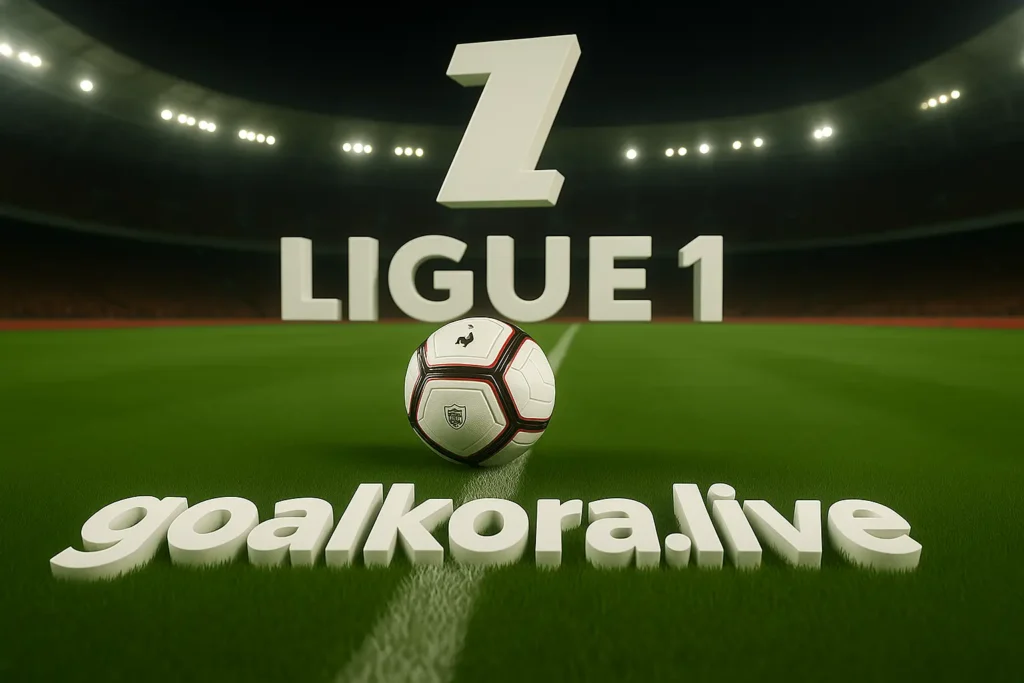
The Birth of Professional Football in France
The landscape of French football underwent a monumental transformation in July 1930. It was then that the National Council of the French Football Federation (FFF) decisively voted 128-20 in favour of adopting professionalism.[1] This was not merely a procedural adjustment but a significant cultural shift, steering French football away from a purely amateur ethos that had previously been dominant. The figures credited as the architects of this professional dawn are Georges Bayrou, Emmanuel Gambardella, and Gabriel Hanot, whose vision laid the groundwork for a new era.[1] The FFF itself, established on April 7, 1919, by succeeding the Comité Français Interfédéral (CFI), was instrumental in this transition. The CFI had earlier replaced the Union des Sociétés Françaises de Sports Athlétiques (USFSA) as France’s FIFA representative in 1907.[2] Notably, the USFSA had been an organization that resisted the move towards professionalism in sport, so the FFF’s embrace of it marked a clear departure and a new direction for French football governance.[2]
The first all-professional league season, officially inaugurated on September 11, 1932, was initially named « National ».[1, 3, 4] This inaugural 1932-1933 season saw 20 clubs step into this new professional framework.[1] Among these pioneers were clubs that remain prominent names in French football today, such as Olympique de Marseille, FC Metz, OGC Nice, Stade Rennais, FC Sochaux-Montbéliard, and Montpellier HSC.[1] The geographical spread of these founding clubs, encompassing regions from the north (like Olympique Lillois and Racing Club de France) to the south (Marseille, Nice, Montpellier), indicated a broad, national acceptance of this professional venture from its inception.[1] This widespread support was crucial for establishing the league’s identity as a truly French competition, rather than one confined to a specific region.
Navigating Change: Evolution Through Decades
The league’s identity has been shaped by several name changes over its history. After its debut as « National » in 1932-33, it became « Division 1 » the following year, a name it would carry for nearly seven decades until 2002.[1, 3, 5] In 2002, as part of a broader strategy to modernize and enhance its brand appeal on the international stage, it was rebranded to the now-familiar « Ligue 1 ».[1] This change aligned it with the branding conventions of other major European leagues, reflecting an ambition to strengthen its global recognition.
The continuity of French professional football was severely tested by World War II, which led to the suspension of official league operations between 1939 and 1945.[4, 5, 6, 7, 8] The league officially resumed in 1945, ushering in a period of rebuilding and subsequent growth.[4] It is a significant historical note that the Ligue de Football Professionnel (LFP) and the FFF do not grant official recognition to any championships claimed during the wartime period (1939-1945).[5] This stance preserves the integrity and unbroken lineage of the official professional title, ensuring its prestige remains undiluted by the disruptions of the conflict.
The structure of the league, particularly the number of participating clubs, has also seen considerable evolution. It began with 20 clubs in its inaugural 1932-33 season, then saw fluctuations to 14, 16, and 18 clubs before and immediately after the war. The number settled at 18 for a period, then expanded to 20, and saw further adjustments before a significant recent change.[1] Ahead of the 2023-24 season, Ligue 1 was reduced from 20 to 18 teams.[1] This latest restructuring, which involved relegating four teams from Ligue 1 and promoting only two from Ligue 2, represents a strategic move likely aimed at increasing the overall quality of competition and potentially enhancing financial sustainability per club by concentrating resources.[1] Such adjustments are often responses to the evolving competitive and economic pressures within European football.
Early Champions and Establishing Traditions
The honour of being the very first professional football champion of France went to Olympique Lillois in the 1932-33 season.[1, 4, 7, 8, 9] They secured the title by defeating AS Cannes in the final, which was held at a neutral venue.[1] The path to this first final was not without controversy; Antibes, the winner of Group B (the league was initially structured with two groups of 10), was disqualified by the French Football Federation due to suspicions of bribery, preventing their participation in the championship match.[1] This incident, occurring in the league’s very first year, underscored the immediate ethical and regulatory challenges that accompany the professionalization of sport, necessitating robust governance from the outset.
In the years leading up to World War II, several other clubs etched their names onto the trophy. FC Sète were champions in 1933-34 and again in 1938-39, FC Sochaux claimed titles in 1934-35 and 1937-38, Racing Club de France (now Racing Club de Paris) won in 1935-36, and Olympique de Marseille secured their first professional title in 1936-37.[1, 8]
The league’s organizers demonstrated an early commitment to maintaining a certain standard for professional competition. To be eligible for participation, clubs had to satisfy three important criteria: they needed a history of positive results, the financial capacity to balance their books, and the ability to recruit a minimum of eight professional players.[1] These entry requirements suggest a deliberate strategy to build a credible and sustainable league, rather than an entirely open system, perhaps learning from the pitfalls encountered by other nascent professional sports ventures. This proactive approach to quality control was likely a crucial factor in the league’s ability to establish itself and endure through its formative, and often challenging, early years. The initial format of two groups followed by a final was also quickly adapted, showing a willingness to refine the competition structure for optimal engagement and fairness, ensuring fans always had compelling matches to follow, a tradition continuing with services offering YALLA SHOOT LIVE streams.
The Pantheon of French Football: Ligue 1 Champions, Dynasties, and Legends
Explore the pantheon of French football, focusing on Ligue 1 champions, dominant dynasties like PSG and Saint-Étienne, and legendary players who shaped the league. Discover the eras of greatness and how fans catch every moment, often searching for GOAL KORA broadcasts.
For nearly a century, Ligue 1 has been the stage for thrilling title races, the rise and fall of dominant club eras, and the emergence of players who have achieved legendary status both in France and on the global football scene. The narrative of French football is richly woven with the achievements of these clubs and individuals, creating a pantheon that celebrates excellence, resilience, and moments of sheer brilliance, all while fans eagerly seek out KORA GOAL coverage.
Eras of Dominance: Clubs That Defined Ages
Certain periods in Ligue 1 history have been unmistakably characterized by the supremacy of individual clubs, creating dynasties that left an indelible mark:
- Stade de Reims (1950s-early 1960s): In the post-war reconstruction period, Stade de Reims emerged as France’s pre-eminent force. Featuring iconic players such as Raymond Kopa and Just Fontaine, Reims captured six Ligue 1 titles between 1949 and 1962.[1, 4, 7, 9] Their domestic success translated onto the European stage, most notably reaching the final of the inaugural European Cup in 1956, where they narrowly lost to Real Madrid, and again in 1959.[4, 10, 11] These achievements significantly raised the profile of French club football internationally.
- AS Saint-Étienne (1960s-1970s): The 1960s and 1970s belonged to « Les Verts » of AS Saint-Étienne. This era saw the club achieve an impressive ten Ligue 1 championships, a record at the time.[1, 5, 12] Their golden age was overseen by influential managers like Jean Snella, Albert Batteux, and Robert Herbin.[12, 13] The team, known for its attacking prowess and featuring stars like Salif Keita, Hervé Revelli, and Dominique Rocheteau, captured the imagination of France, particularly during their memorable run to the 1976 European Cup final, where they were narrowly defeated by Bayern Munich.[4, 10, 11, 13] This period cemented Saint-Étienne’s place as one of French football’s most storied clubs.
- Olympique de Marseille (late 1980s-early 1990s): Under the ambitious and controversial chairmanship of Bernard Tapie, Olympique de Marseille assembled a formidable squad of international stars, including Didier Deschamps, Jean-Pierre Papin, and Eric Cantona.[14, 15] This investment yielded unprecedented success, with Marseille winning five consecutive Ligue 1 titles from 1988-89 to 1992-93 (though the 1992-93 title was later revoked).[1, 8, 14] The crowning achievement of this era was their victory in the 1993 UEFA Champions League, defeating AC Milan 1-0, making Marseille the first and, to date, only French club to win Europe’s most prestigious club competition.[4, 5, 7, 9, 11, 14, 15, 16] However, this glittering period was infamously tainted by a match-fixing scandal that led to Tapie’s imprisonment, the stripping of their 1992-93 league title, and the club’s subsequent relegation to the second division.[8, 14]
- Olympique Lyonnais (2000s): The dawn of the new millennium saw Olympique Lyonnais establish an era of dominance unparalleled in French football history. « Les Gones » secured a remarkable seven consecutive Ligue 1 titles from the 2001-02 season to 2007-08.[1, 3, 5, 7] This sustained success was built on a blend of astute management, a productive youth academy, and the brilliance of key players like the Brazilian free-kick maestro Juninho Pernambucano.[7, 17, 18, 19] Lyon became a consistent presence in the UEFA Champions League during this period, further enhancing their and Ligue 1’s reputation.
- Paris Saint-Germain (2010s-Present): The acquisition of Paris Saint-Germain by Qatar Sports Investments (QSI) in 2011 ushered in the most financially powerful era in French football history.[4, 5] PSG transformed into a global footballing behemoth, attracting a galaxy of world-class talent including Zlatan Ibrahimović, Neymar Jr., Lionel Messi, and Kylian Mbappé.[4, 5] This investment has translated into overwhelming domestic dominance, with PSG winning a multitude of Ligue 1 titles, culminating in a record-extending 13th championship in the 2024-25 season.[1, 6, 12, 20, 21, 22, 23] Their long-held European ambitions were realized with a commanding 5-0 victory over Inter Milan in the 2025 UEFA Champions League final, marking a new zenith for the Parisian club and French football.[11, 16, 22, 24]
The recurring theme across these dominant eras is often a potent mix of significant financial investment (as seen with Tapie’s Marseille and QSI’s PSG), visionary coaching that implements effective tactical systems (like Herbin at Saint-Étienne), and the presence of generational talents or exceptionally influential players (such as Juninho at Lyon or the star-studded lineups of modern PSG). Furthermore, the peak domestic periods of these French giants frequently coincided with notable European campaigns. While Marseille and PSG ultimately lifted the Champions League trophy, the finals reached by Reims and Saint-Étienne also significantly boosted the league’s international standing. This pattern underscores that robust domestic performance is a vital springboard for European contention, though it does not always guarantee the ultimate continental prize, a narrative common to many top European leagues.
The Champions Roll Call
Beyond these era-defining dynasties, several other clubs have distinguished themselves by winning the French championship, contributing to the league’s competitive depth over the years. AS Monaco, FC Nantes, and Girondins de Bordeaux have all enjoyed multiple title successes, each with their own significant periods of achievement.[1, 20, 25] Lille OSC has also claimed the championship on multiple occasions, including a notable recent triumph.
Paris Saint-Germain currently leads the all-time honor roll with 13 Ligue 1 titles. They are followed by AS Saint-Étienne with 10 titles, a testament to their prolonged success in the mid-20th century. Olympique de Marseille holds 9 official titles. AS Monaco and FC Nantes are next, each with 8 championships. Olympique Lyonnais’ 7 titles were all won consecutively, a unique feat in French football history.[1, 20, 21, 25, 26]
A peculiar and significant entry in the league’s annals is the 1992-93 season, for which no champion was officially declared.[6, 8, 23, 26] Olympique de Marseille initially finished first but were stripped of their title by the LFP following the « VA-OM » match-fixing scandal. Paris Saint-Germain, the runners-up that season, reportedly declined to accept the title under these circumstances.[8, 14] This event had profound implications for Marseille’s legacy and cast a shadow over French football at the time, serving as a stark reminder of the paramount importance of sporting integrity.
Connecting back to the league’s origins, the very first champions, Olympique Lillois (1932-33), and other pre-war winners like FC Sète and FC Sochaux, laid the foundations for nearly a century of professional football competition in France.[1, 8] The historical list of champions reveals that while dominant periods by single clubs are evident, Ligue 1 has also witnessed a broader distribution of titles among a diverse group of teams throughout its history. This indicates periods of greater overall competitiveness than is sometimes perceived, particularly before the modern era of PSG’s financial might, and speaks to the rich, varied tapestry of French club football.
Most Successful Ligue 1 Clubs
| Club | Number of Titles | Last Title Season | Notable Winning Seasons/Eras | Number of Runners-up |
|---|---|---|---|---|
| Paris Saint-Germain | 13 | 2024-25 | 2010s-Present (QSI era), 1985-86, 1993-94 | 9 |
| AS Saint-Étienne | 10 | 1980-81 | 1960s-1970s (Golden Age) | 3 |
| Olympique de Marseille | 9 | 2009-10 | Late 1980s-early 1990s, 1936-37, 1970-72 | 13 |
| AS Monaco | 8 | 2016-17 | Various, incl. 1960s, late 1990s | 7 |
| FC Nantes | 8 | 2000-01 | 1960s, 1970s, 1994-95 (The « Jeu à la Nantaise » era) | 7 |
| Olympique Lyonnais | 7 | 2007-08 | 2001-02 to 2007-08 (Seven consecutive) | 5 |
| Girondins de Bordeaux | 6 | 2008-09 | 1980s, late 1990s/2000s | 9 |
| Stade de Reims | 6 | 1961-62 | 1950s-early 1960s | 3 |
| Lille OSC | 4 | 2020-21 | 1945-46, 1953-54, 2010-11 | 6 |
| OGC Nice | 4 | 1958-59 | 1950s | 3 |
Data compiled from.[1, 8, 20, 25]
Icons of the Pitch: Legendary Ligue 1 Players
Ligue 1 has been graced by an array of extraordinary talents who have captivated audiences and left a lasting legacy:
- Early Legends: Players like Raymond Kopa (Stade de Reims), a Ballon d’Or winner, and Just Fontaine (Stade de Reims, OGC Nice), who holds the record for the most goals scored in a single FIFA World Cup (13 goals in 1958), were instrumental in establishing French football’s early international reputation while starring in Division 1.[7, 17]
- French Greats Honed in Ligue 1: Many of France’s most celebrated footballers honed their skills in the domestic league before achieving global stardom. Michel Platini, a three-time Ballon d’Or winner, showcased his genius at AS Nancy and AS Saint-Étienne before his famed exploits in Italy.[4, 17] Zinedine Zidane, another Ballon d’Or recipient and World Cup winner, began his illustrious career at AS Cannes and Girondins de Bordeaux.[17, 27] The electrifying Thierry Henry first made his mark at AS Monaco [4, 27], and the elegant defender Laurent Blanc had a distinguished career with multiple Ligue 1 clubs including Montpellier Hérault SC and Olympique de Marseille.[17]
- Record Holders: The league’s history is punctuated by remarkable individual achievements. Argentinian striker Delio Onnis remains Ligue 1’s all-time top goalscorer, having netted an astonishing 299 goals during his spells with AS Monaco, Stade de Reims, Tours FC, and SC Toulon between 1972 and 1986.[1, 28] Goalkeeper Mickaël Landreau holds the record for the most appearances in Ligue 1, playing 618 matches for FC Nantes, Paris Saint-Germain, Lille OSC, and SC Bastia from 1996 to 2014.[1, 28, 29] These records signify not just exceptional talent but also remarkable consistency and longevity within the French top flight, creating historical benchmarks for future generations.
- Era-Defining Imports: Ligue 1 has also been enriched by foreign talents who significantly impacted their clubs and the league’s profile. Juninho Pernambucano of Brazil is synonymous with Olympique Lyonnais’ period of seven consecutive titles. His unparalleled free-kick ability (he scored a world-record 44 free-kicks for Lyon) and leadership were pivotal to their dynasty.[17, 18, 19] Swedish superstar Zlatan Ibrahimović‘s arrival at Paris Saint-Germain in 2012 had an immense impact, elevating PSG’s status and bringing global attention to Ligue 1 with his goals and charismatic personality.[4, 17]
- Modern Superstars: In more recent times, Neymar Jr.‘s world-record transfer to PSG in 2017 brought unprecedented global viewership to the league.[4, 17] Perhaps the most prominent current icon is Kylian Mbappé. After bursting onto the scene with AS Monaco, he joined PSG, becoming a World Cup winner with France and accumulating numerous Ligue 1 titles, top scorer awards, and Player of the Year accolades.[4, 17, 27, 28] His performances have solidified his status as one of the world’s best players while competing in Ligue 1.
The consistent emergence of world-class French players who began their journeys in Ligue 1, coupled with the league’s ability to attract established international stars, demonstrates its crucial dual role in the global football ecosystem. It serves as both a fertile breeding ground for homegrown talent destined for international acclaim and a competitive destination for elite foreign players seeking to make their mark, thereby enriching the quality and visibility of French football. The global fanbase often tunes in via various platforms, hoping for a quality YALLA LIVE experience to catch these stars.
Ligue 1 Today: Modern Spectacle, Global Ambitions, and the Path Ahead
Analyze modern Ligue 1: PSG’s current reign, the exciting emergence of young talents like Doué & Zaïre-Emery, and fierce rivalries such as Le Classique. Understand the evolving broadcasting landscape and how fans access YALLA SHOOT LIVE streams for the latest action.
Contemporary Ligue 1 stands as a dynamic and evolving entity within European football. It navigates the pressures of modern sporting economics, strives for greater international recognition, and continues its tradition of nurturing exceptional footballing talent. The league’s current structure, competitive balance, iconic rivalries, and the pressing issues of broadcasting – crucial for fans wanting KORA LIVE access – and governance all contribute to its complex and fascinating modern narrative.
The Current State of Play
Ligue 1 currently operates with 18 clubs, a reduction from the previous 20, implemented at the start of the 2023-24 season.[1] This structural adjustment aimed to enhance the league’s overall quality and potentially improve financial distribution among member clubs, a strategic move seen in other successful European leagues. Each season, clubs play a total of 34 matches, facing every other team both home and away.[1, 30] The standard points system (three for a win, one for a draw) determines the champion, with tie-breaking criteria such as goal difference and goals scored.
The league facilitates qualification for UEFA’s prestigious club competitions: the Champions League, Europa League, and Conference League, based on final league standings.[1] A system of promotion and relegation connects Ligue 1 with Ligue 2, typically involving the bottom two teams being automatically relegated and the top two from Ligue 2 promoted. Additionally, a play-off match often takes place between the 16th-placed Ligue 1 team and a high-finishing Ligue 2 side to determine the final spot in the top flight for the following season.[1]
Recent history has been largely dominated by Paris Saint-Germain, who secured their record 13th French title in the 2024-25 season.[1] However, this dominance has been punctuated by noteworthy triumphs from other clubs. Lille OSC clinched the title in the 2020-21 season, and AS Monaco were champions in 2016-17.[6, 20, 23, 31] While PSG’s financial superiority, stemming from their QSI ownership, has undeniably created a significant competitive advantage, these occasional upsets by clubs like Lille and Monaco are vital for the league’s narrative. They demonstrate that astute recruitment strategies, strong coaching philosophies, and exceptional team cohesion can still overcome financial disparities, preventing the championship race from becoming entirely predictable and maintaining a degree of competitive intrigue.[4]
Recent Ligue 1 Champions & Runners-Up (Last 10 Completed Seasons)
| Season | Champion | Runner-Up |
|---|---|---|
| 2024-25 | Paris Saint-Germain | Olympique de Marseille |
| 2023-24 | Paris Saint-Germain | AS Monaco |
| 2022-23 | Paris Saint-Germain | RC Lens |
| 2021-22 | Paris Saint-Germain | Olympique de Marseille |
| 2020-21 | Lille OSC | Paris Saint-Germain |
| 2019-20 | Paris Saint-Germain | Olympique de Marseille |
| 2018-19 | Paris Saint-Germain | Lille OSC |
| 2017-18 | Paris Saint-Germain | AS Monaco |
| 2016-17 | AS Monaco | Paris Saint-Germain |
| 2015-16 | Paris Saint-Germain | Olympique Lyonnais |
Data compiled from.[6, 8, 20, 23, 26, 31, 32]
The Thrill of Rivalry and Unforgettable Moments
Ligue 1 is home to several passionate rivalries, deeply ingrained in French regional identities and socio-economic histories, transforming these matches into significant cultural events:
- Le Classique (Paris Saint-Germain vs. Olympique de Marseille): This is undoubtedly France’s most fiercely contested and widely recognized rivalry.[33, 34] It pits the capital, Paris, often seen as cosmopolitan and affluent, against Marseille, a historic port city representing Mediterranean culture and a strong working-class identity.[34, 35] The animosity has grown since the late 1980s and early 1990s. Memorable encounters include Marseille’s 4-2 win in the first league clash in 1971, PSG’s dominant 5-1 victory in 1978, Marseille’s commanding 3-0 win in 2010, and a particularly tempestuous match in 2020 that saw five players sent off, underscoring the fixture’s intensity.[35, 36]
- Derby Rhône-Alpes (Olympique Lyonnais vs. AS Saint-Étienne): One of the oldest and most traditional rivalries in French football, this derby is fueled by the close geographical proximity of Lyon and Saint-Étienne (around 60km apart) and a historical battle for supremacy in the Rhône-Alpes region.[34] While Saint-Étienne boasts a richer historical trophy cabinet, Lyon’s seven consecutive league titles in the 2000s significantly intensified the rivalry from their perspective.[34]
- Derby du Nord (Lille OSC vs. RC Lens): This northern derby is a passionate affair, reflecting regional pride and contrasting local identities. Lens, with its strong industrial heritage, faces Lille, a city that has evolved into a more modern, commercial hub.[34] These socio-cultural undercurrents add an extra layer of fervor to their encounters.
- Other Notable Rivalries: The Côte d’Azur Derby between AS Monaco and OGC Nice has gained prominence, driven by the clubs’ ambitions for European qualification and regional bragging rights on the French Riviera.[34]
Beyond rivalries, Ligue 1 has produced seasons of extraordinary football and compelling narratives:
- FC Nantes (1994-95): This season remains legendary in French football. Coached by Jean-Claude Suaudeau and playing an attractive, fluid style dubbed « jeu à la Nantaise, » Nantes won their seventh league title in spectacular fashion.[37, 38] They lost only one match throughout the entire league campaign and embarked on a remarkable 32-match unbeaten streak, records that still stand as benchmarks of consistency and quality.[1, 37] Key players in this iconic team included Patrice Loko, Nicolas Ouédec, Reynald Pedros, and a young Claude Makélélé.[37, 38]
- Montpellier HSC (2011-12): In one of the most surprising title victories in modern European football, Montpellier Hérault SC were crowned champions, defying the odds against a newly enriched Paris Saint-Germain.[6, 20, 23] Led by striker Olivier Giroud (who finished as the league’s top scorer), playmaker Younès Belhanda (named Ligue 1 Young Player of the Year [27]), and under the pragmatic coaching of René Girard, Montpellier’s triumph was a classic underdog story that resonated widely and demonstrated that tactical acumen and team spirit could still prevail over sheer financial power.
These remarkable seasons and intense rivalries are crucial to Ligue 1’s appeal. They provide compelling storylines that extend beyond the dominance of the wealthiest clubs, countering simplistic critiques of the league’s competitiveness and showcasing the genuine excitement and memorable achievements that French football regularly offers.[7] High-scoring and dramatic matches, such as FC Lorient’s 4-4 draw with Montpellier in 2014 or PSG’s 3-3 thriller with Le Havre in 2024, further highlight the entertainment value present in the league.[39]
Nurturing Future Stars: Ligue 1’s Talent Factory
Ligue 1 has earned a distinguished reputation as a « talent factory, » a league that consistently develops and showcases young footballers who frequently go on to achieve stardom in Europe’s biggest clubs and on the international stage.[4, 40, 41] This is not merely a consequence of financial positioning relative to other top leagues but is often a deliberate and successful sporting strategy adopted by many of its clubs.[41] Evidence of this commitment to youth is seen in the fact that Ligue 1 had the youngest average starting XI among Europe’s top five leagues during the 2024/25 season, at 26 years and 104 days.[41]
The 2023-2025 period has continued to highlight this trend, with several young players making significant impacts:
- Désiré Doué (Paris Saint-Germain): Born in June 2005, the winger made a high-profile move from Stade Rennais to PSG. He quickly established himself, earning his first cap for the French national team and playing a crucial role in PSG’s 2025 UEFA Champions League triumph, where he was named Young Player of the Season.[41, 42, 43, 44, 45] His exceptional performances also earned him the Ligue 1 Young Player of the Year award for the 2024-25 season.[27] His market value reflects his status as one of Europe’s brightest prospects.[40, 43]
- Warren Zaïre-Emery (Paris Saint-Germain): An academy graduate born in March 2006, Zaïre-Emery has impressively cemented a regular place in PSG’s midfield despite his youth.[40, 41, 43, 45] His maturity and technical quality saw him named Ligue 1 Young Player of the Year for the 2023-24 season.[27]
- Rayan Cherki (Olympique Lyonnais): Born in August 2003, the attacking midfielder/winger has amassed considerable first-team experience, with over 138 Ligue 1 appearances by the age of 21.[41] He is recognized for his consistent delivery of talent and holds a high market value for a player outside the PSG setup.[40, 43]
- Eliesse Ben Seghir (AS Monaco): Born in February 2005, Ben Seghir has emerged as a potent attacking threat, leading the scoring charts among the very youngest cohort of players in the 2024/25 season with 6 goals.[41]
Other notable young talents making their mark include Portuguese midfielder João Neves at PSG [42, 43, 45], Brazilian midfielder Andrey Santos (on loan at RC Strasbourg Alsace from Chelsea) [40, 43], the exceptionally young Ayyoub Bouaddi (Lille OSC, born October 2007) [41], and PSG forward Bradley Barcola.[42, 45]
The prestigious Ligue 1 Young Player of the Year award, previously won by luminaries such as Zinedine Zidane, Thierry Henry, Eden Hazard, and Kylian Mbappé, continues to be a significant indicator of future stardom, further underscoring the league’s role in talent development.[27] PSG’s recent strategy, which involves integrating top young French talents like Doué and Zaïre-Emery alongside established international stars, suggests an evolving approach. This may be aimed at creating a more sustainable model with a stronger local identity, while simultaneously maintaining competitiveness at the highest European levels, a shift from their earlier, more heavily import-focused recruitment phases.[4, 5, 41]
Notable Emerging Talents in Ligue 1 (2023-2025)
| Player | Club | Position | Age (2024-25) | Key Achievements/Impact |
|---|---|---|---|---|
| Désiré Doué | Paris Saint-Germain | Winger | 19-20 | Ligue 1 Young Player of Year 2024-25, UCL Winner 2025 & UCL Young Player of Season 2025, French Int’l |
| Warren Zaïre-Emery | Paris Saint-Germain | Midfielder | 18-19 | Ligue 1 Young Player of Year 2023-24, PSG regular, French Int’l |
| Rayan Cherki | Olympique Lyonnais | Attacking Midfielder/Winger | 21-22 | 138+ Ligue 1 appearances by age 21, key creator for Lyon |
| Eliesse Ben Seghir | AS Monaco | Forward/Midfielder | 19-20 | Leading young goalscorer (6 goals in 2024/25 for U2005 cohort) |
| João Neves | Paris Saint-Germain | Defensive Midfielder | 20-21 | Key PSG signing, strong midfield performances, Portuguese Int’l |
| Andrey Santos | RC Strasbourg Alsace (loan) | Central Midfielder | 20-21 | 14 goal involvements from midfield (2024-25), standout performer for Strasbourg |
| Bradley Barcola | Paris Saint-Germain | Forward | 22-23 | 23 goals, 19 assists (all comps 2024-25), UCL Winner 2025 |
| Ayyoub Bouaddi | Lille OSC | Midfielder | 17-18 | One of the youngest players to feature regularly |
Data compiled from.[27, 40, 41, 42, 43, 44, 45]
The Business of Ligue 1 and Its Future Trajectory
The commercial landscape of Ligue 1 is currently navigating a period of significant challenge and transformation, particularly concerning its broadcasting rights, while also exploring structural reforms to enhance its appeal and financial stability.
Broadcasting Rights Turmoil and the Shift to DTC: Ligue 1 has faced recurring crises with its domestic television rights. The most notable was the collapse of a lucrative €814 million-per-year deal with Mediapro in 2020-21.[46, 47] Mediapro, which launched a dedicated channel « Téléfoot, » failed to secure enough subscribers (600,000 against a target of 3.5 million) and ultimately defaulted on payments, causing severe financial strain on French clubs.[46]
More recently, the 2024-25 season has been marked by another major disruption involving the streaming service DAZN. A multi-year deal, reportedly worth around €400 million annually for eight matches per week until 2029, was terminated after just one season.[46, 48, 49, 50] The termination involved DAZN paying an exit fee of €100 million on top of €140 million in owed payments.[49, 50] The dispute arose from DAZN withholding payments, citing, among other issues, the LFP’s alleged shortcomings in combating piracy of Ligue 1 broadcasts.[50]
These repeated broadcasting setbacks, symptomatic of deeper challenges in Ligue 1’s commercial strategy and its perceived market value compared to other major European leagues, have forced a radical strategic pivot. The LFP is now actively planning to launch its own Direct-to-Consumer (DTC) streaming service, a « 100% Ligue 1 » channel, for the upcoming season.[46, 50, 51] This is a high-stakes venture. While it offers the potential for greater control over content, higher profit margins, and direct engagement with the fan base, it also carries significant financial risks if subscriber targets (previous contingency plans aimed for 2 million users at €25-€30 per month) are not met, especially given the struggles of previous broadcasters at similar price points.[46] Few major European leagues have fully embraced a DTC model due to the financial predictability of traditional rights deals, making Ligue 1’s move a potentially pioneering, yet perilous, one. For fans worldwide, navigating this changing landscape to watch their favorite teams will be crucial. Many will turn to online resources and platforms to find information on how to access KORA LIVE streams or get updates via KORA GOAL. The availability of reliable YALLA LIVE and YALLA SHOOT LIVE options will be paramount, and comprehensive fan experiences, perhaps through GOAL KORA features, could define the success of this new broadcasting era for Ligue 1. DAZN has reportedly expressed interest in partnering with the LFP on this new DTC channel, potentially offering operational support.[50]
Sponsorship and Financial Health: McDonald’s became the league’s title sponsor from the 2024-25 season, in a deal reported to be worth $97.85 million over three years.[1, 52, 53, 54] This followed previous title sponsorships by Uber Eats [3, 53] and Orange. BetClic serves as the league’s official gambling partner in a deal valued at $6.25 million annually.[54] For the 2024-25 season, total league-level sponsorship revenue is anticipated to be around $55.87 million, while club-specific sponsorship deals across all 18 teams amass a significant $578.89 million annually, with PSG unsurprisingly leading in this domain.[54]
Financially, Ligue 1 clubs generated a total revenue of €2.37 billion in the 2022-23 season (when it comprised 20 clubs), with a collective net loss of €273.2 million. This was a substantial reduction from the €581.9 million net loss recorded in 2021-22.[47] However, broadcasting revenue saw a 3% decline in 2022-23, even before the recent DAZN crisis, highlighting the ongoing pressure in this area.[47] A significant development was the €1.5 billion investment by private equity firm CVC Capital Partners for a 13% stake in LFP Media, the league’s commercial subsidiary, aimed at bolstering club finances and league development.[47, 51]
Proposed League Restructuring: In response to challenges related to competitive balance and commercial appeal, particularly in an era of PSG’s strong domestic performance, significant structural reforms are under consideration:
- ‘Final Four’ Tournament: A task force, led by Toulouse FC president Damien Comolli, is exploring the introduction of a play-off system involving the top four teams to decide the Ligue 1 champion.[55, 56] This format, similar to that used in France’s top women’s league, aims to inject more excitement and unpredictability into the title race and has reportedly received favorable initial reactions from stakeholders.[55, 56]
- ‘Premier League Model’ Governance: There are plans to replace the LFP with a new, club-owned commercial entity, with the FFF, the clubs themselves, and CVC Capital Partners as shareholders.[51, 55, 56] This new body would be responsible for managing and marketing professional competitions, drawing inspiration from the English Premier League’s governance structure. The aim is to create a more efficient, transparent, and commercially astute organization, potentially by the 2026/27 season, with the FFF retaining veto power on key structural issues.[51]
These proposed reforms – the ‘Final Four’ and the new governance model – are interconnected strategies. They seek to address the perceived predictability stemming from PSG’s domestic strength and to enhance the league’s overall commercial viability and administrative effectiveness. This represents a critical juncture for French football, as it attempts to innovate its way to a more sustainable and engaging future.
European Performance Context: French clubs have a mixed but notable history in European competitions. Olympique de Marseille (1993) and Paris Saint-Germain (2025) stand as the only French winners of the UEFA Champions League/European Cup.[5, 11, 16, 22] Stade de Reims, AS Saint-Étienne, AS Monaco, and PSG (in 2020) have all reached the final of Europe’s premier club competition.[11] In the UEFA Europa League (formerly UEFA Cup), French clubs like SC Bastia, Girondins de Bordeaux, and Olympique de Marseille (on multiple occasions) have been runners-up.[11] Paris Saint-Germain also won the now-defunct UEFA Cup Winners’ Cup in 1996.[11] The strong start by French clubs in the 2024/25 European season offers encouragement for the league’s international standing.[57] PSG’s recent Champions League victory, while a landmark achievement for the club and French football, could paradoxically intensify the domestic challenge for Ligue 1. It further underscores the gap between PSG and other clubs, making the proposed reforms aimed at enhancing league-wide competitiveness and interest even more crucial for the long-term health and appeal of the entire competition.
Conclusion
Ligue 1, from its foundational moments in the 1930s to its current dynamic state, presents a compelling narrative of evolution, triumph, and ongoing adaptation. Its history is punctuated by the establishment of professionalism against a backdrop of amateur ideals, the rise of iconic clubs that defined distinct eras, and the emergence of legendary players who have graced both French pitches and the world stage. Clubs like Stade de Reims, AS Saint-Étienne, Olympique de Marseille, Olympique Lyonnais, and more recently, Paris Saint-Germain, have each contributed significantly to the league’s legacy, achieving periods of domestic dominance and, in some cases, European glory.
The league’s commitment to nurturing young talent remains a cornerstone of its identity, consistently producing world-class players and maintaining its status as a « talent factory » for European football. This focus on youth, combined with passionate regional rivalries like Le Classique, ensures a vibrant and engaging product.
However, the modern era presents significant challenges. The recurring instability in broadcasting rights, culminating in the recent termination of the DAZN deal and the impending launch of a league-operated DTC streaming service, places Ligue 1 at a critical financial and strategic crossroads. This move, born out of necessity, is a bold gamble that could reshape how fans consume French football. Simultaneously, proposed structural reforms, including a ‘Final Four’ championship play-off and a new ‘Premier League model’ for governance, indicate a proactive approach to addressing issues of competitive balance and enhancing commercial appeal in an increasingly competitive global football market.
As Ligue 1 navigates these transformations, its ability to successfully implement these new broadcasting and governance models, continue fostering elite talent, and maintain the passion of its historic rivalries will determine its trajectory in the years to come. For fans eager to follow this journey, staying informed through comprehensive platforms that can provide updates on accessing KORA LIVE or YALLA SHOOT LIVE streams will be essential as French football embarks on this new chapter. The blend of storied tradition and ambitious innovation ensures that Ligue 1 will remain a fascinating and significant component of the European football landscape, with many relying on GOAL KORA for the latest updates and KORA GOAL for match insights.

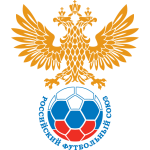
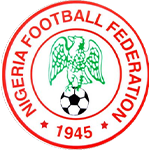
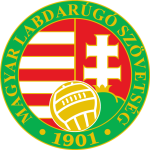

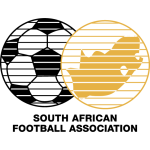


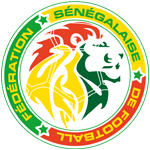
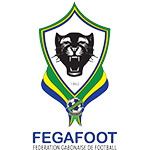


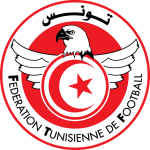
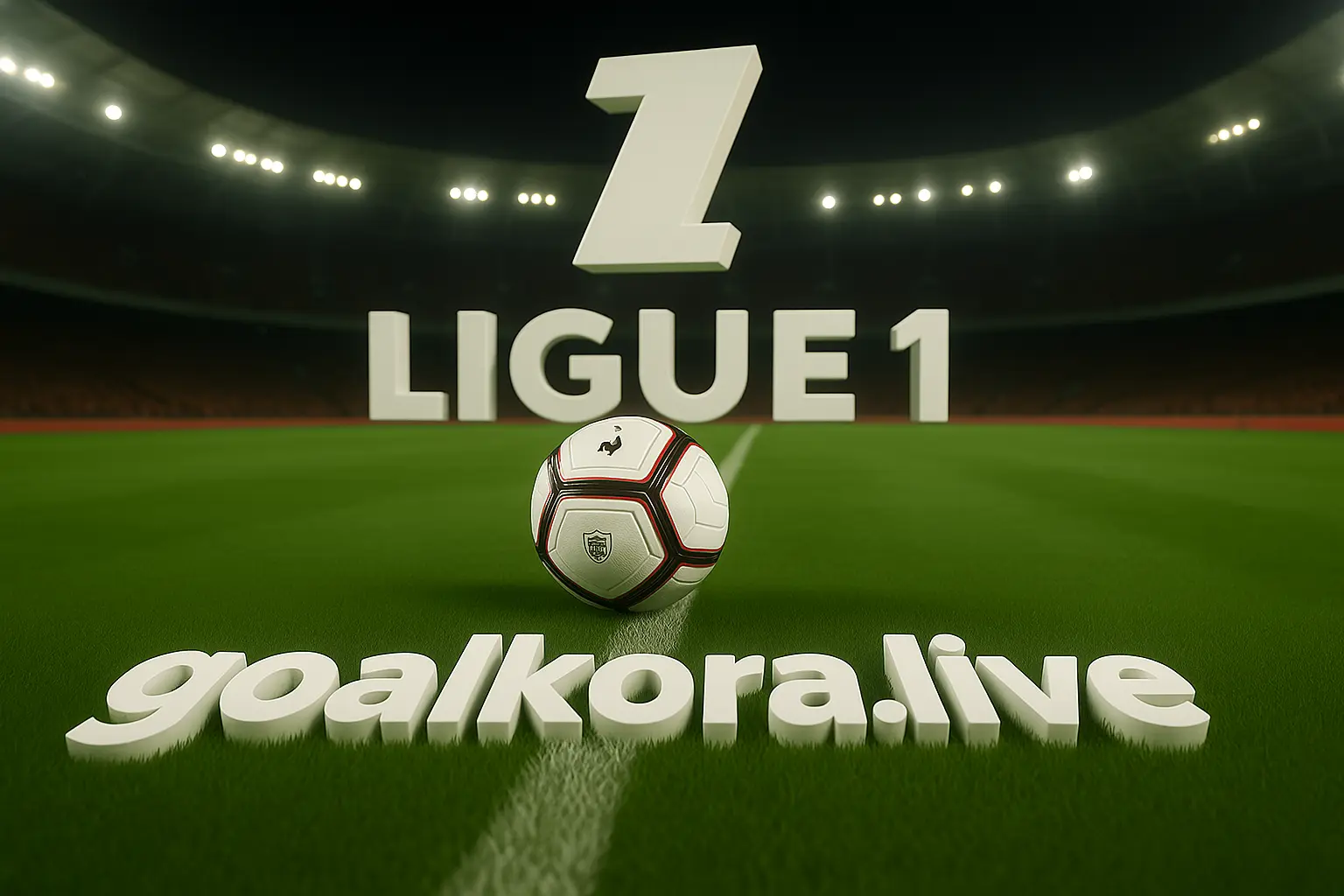
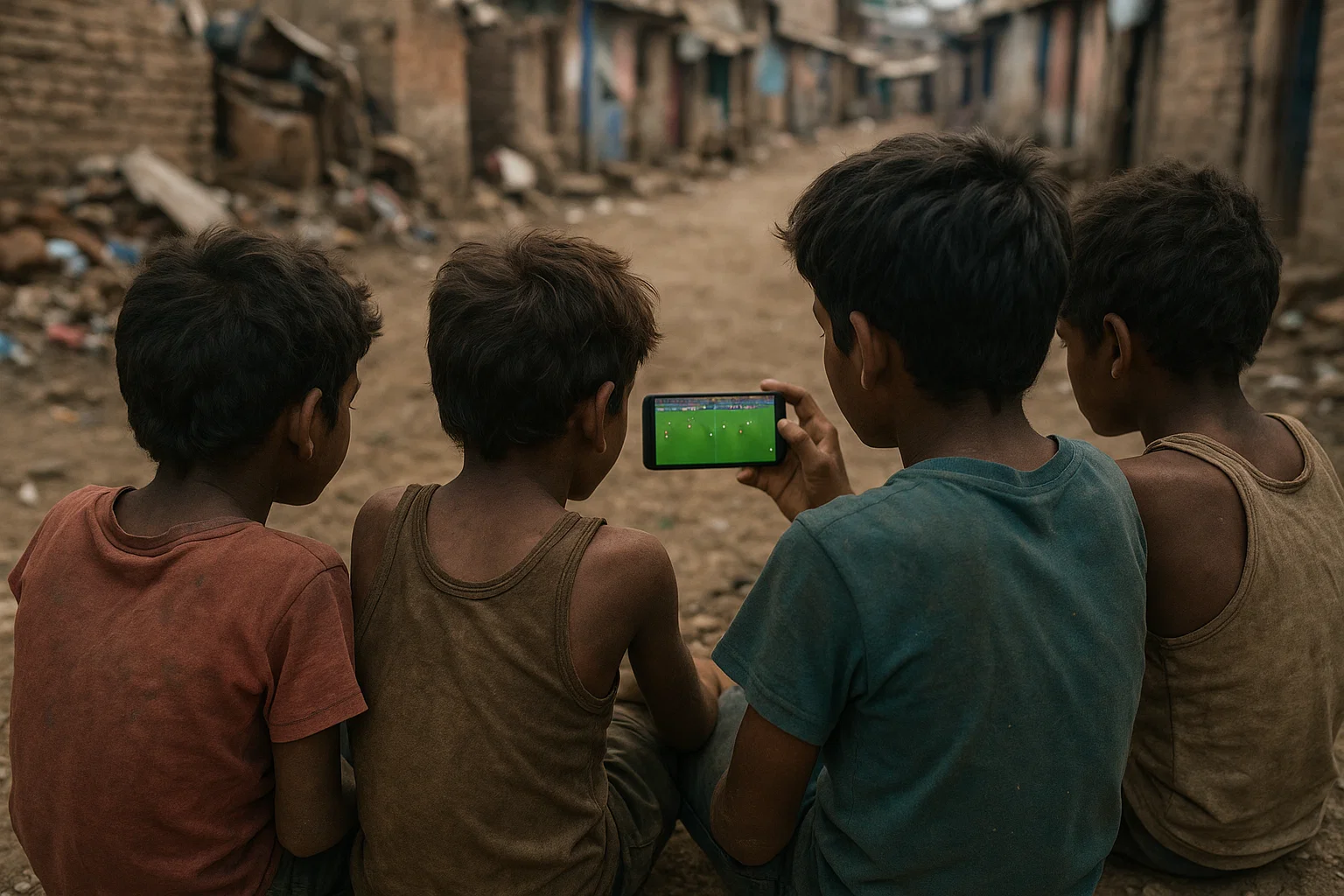
Comments( 0 )